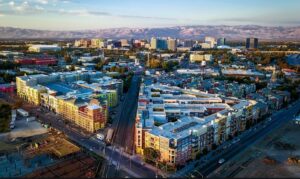 Earlier this month Stripe announced its $200mm acquisition of Paystack, a fintech startup from Lagos, Nigeria. For an African startup to exit at a meaningful figure at all is unusual enough, but that it had garnered a $200mm price tag would have been unfathomable by most observers a few short years ago — even by those long evangelizing Africa’s ‘emerging tech hub’ bona fides.
Earlier this month Stripe announced its $200mm acquisition of Paystack, a fintech startup from Lagos, Nigeria. For an African startup to exit at a meaningful figure at all is unusual enough, but that it had garnered a $200mm price tag would have been unfathomable by most observers a few short years ago — even by those long evangelizing Africa’s ‘emerging tech hub’ bona fides.
However, to certain observers and cross-border venture investors, such as us at Catapult, who’ve spent years shuttling between tech hubs outside Silicon Valley, stories like that of Paystack are becoming increasingly common. More to the point, they are a harbinger for things to come vis-à-vis Silicon Valley’s waning influence on the tech landscape; something that’s been underway for the better part of a decade and now accelerated by an order of magnitude by the impact of Covid-19.
The Rise of ‘Tier 2’ Tech Ecosystems Globally
While renown tech hubs such as Stockholm (Spotify, Klarna), Toronto (Shopify, Ecobee), and Tel Aviv (Waze, Mobileye) have generated significant technology companies for some time, the number of large exits originating from those geographies has skyrocketed in recent years. While this is to be somewhat expected, what is surprising is the emergence of technology leaders and meaningful exits from hubs heretofore largely dismissed by market observers. Think Dubai, and Uber’s $3.1 Billion acquisition of Dubai-based Careem; or Bogota’s Rappi and its rise to unicorn status; or Seoul’s Baemin, and its recent $4 Billion acquisition by Delivery Hero. Yes, Stockholm, Toronto and Tel Aviv are probably top of mind with most VCs by now, but I’d wager Dubai, Bogota and Seoul weren’t exactly on most investors’ bingo card.
It’s axiomatic that Silicon Valley has enjoyed an outsized reputation as the leading global tech hub since the 1960s and has cast a long shadow over the industry for decades. Silicon Valley lore is rich with heady tales of the days of Fairchild Semiconductor, XeroxPARC and the like. Technologies that emerged during that era changed the world. Talent attracted to Silicon Valley to work at those iconic companies would form a diaspora that would go on to build the next generation of technology juggernauts — Apple, Intel, Sun, Cisco, et al. The names of tech visionaries from that era and those of the investors behind them — Tom Perkins, Don Valentine, Gordon Moore, et al — are etched into the psyche of every entrepreneur and VC who came of age in the post-dotcom era.
From a geography to a State of Mind
We are a long way from the days of XeroxPARC and Fairchild Semiconductor, to be sure. Once just a patchwork of fruit orchards, Silicon Valley has become much more that its geography or its storied history.
Today, Silicon Valley is not unlike “Wall Street” or “Rodeo Drive” — iconic names that evoke in those that hear them ideas about something larger than the physical spaces they encompass. They’ve come to symbolize an idea, a culture, even a way of thinking.
Most people across the world will never visit Wall Street nor Rodeo Drive, but their mere mention evokes an instant impression. This is true of today’s Silicon Valley. For many it means bold innovation, wide-eyed optimism, and limitless possibilities. And it will continue to have that meaning for decades to come, I am convinced. But it can no longer hold claim that it has cornered the market on those attributes.
Visitors who, after having consumed Valley lore for years, finally set foot on Silicon Valley’s nondescript 48.6-square-mile patchwork of land often come away disappointed. New York City, this is not. Perhaps it’s the boulevards that stretch endlessly and are dotted with manicured office parks and unremarkable strip malls filled with every suburban cliche’s smorgasbord of nail salons and karate studios. Perhaps it’s the lack of a thumping, thriving center. Or perhaps it’s the absence of iconic landmarks. (No, the Facebook “Like” sign on 1 Hacker Way does not count.) While turning David Packard’s Palo Alto garage into a Hewlett-Packard museum was a nod in the right direction of honoring some of the Valley’s great history, there is still scant little else for a tech tourist to come and see and do.
Wall Street, for its part, does not really exist any more in any literal sense either. Most iconic Wall Street firms moved out of Wall Street — and many even out of NYC entirely — in the wake of 9/11. Judging by the number of global financial services firms operating, one could argue that the real Wall Street today is located in Hoboken, New Jersey; or in City of London; or, in Frankfurt. So much for the power of place. But it doesn’t really matter that most ‘Wall Street’ firms don’t have a footprint on Wall Street any longer. And it won’t really matter for Silicon Valley either.
Geography no longer really matters
This wasn’t always the case. One could argue that twenty years ago if an entrepreneur wanted to build a global technology company he/she would have been well-advised to do it in Silicon Valley. The common argument was to liken being in Silicon Valley to being in Florence during the Renaissance. At its peak, Florence possessed perhaps the world’s greatest of network effects: a flammable combination of art, innovation, commerce and mentorship that became the envy of the world. As author Daniel Coyle explains in The Talent Code, “Davinci studied under Verrocchio. Verrocchio studied under Donatello. Donatello studied under Ghilberti. Michelangelo studied under Ghirlandaio. Ghirlandaio studied under Baldovinetti. And so on. All of them frequently visiting one another’s studios in a cooperative competitive arrangement that today would be called social networking.”
Like Florence, Silicon Valley possessed all the components and constituents necessary to build a global tech company — capital, investors, talent, co-founders, sage mentors, experienced service providers, and the like. Moreover, there was serendipity in being here — the launch parties; the Demo Days; the happy hour mixers at VC firms; the summer BBQs in Napa or Atherton; and, of course, the co-working spaces teeming with talented people working on exciting ideas. Above all, there was the knowledge that at all those events — both the exclusive and the pedestrian —talented people were ubiquitous. Any one of them could be your next co-founder, angel investor, mentor, or venture capitalist. They were everywhere; passing you on the street, or bumping into you at a launch party, or in line behind you at Blue Bottle. It was frisson. The energy was palpable. Everything was possible… And then Covid.
Being Remote and Global from Day One is now table stakes
Yes, the pandemic has caused a massive reappraisal of everything — which I’ve discussed in previous posts, here, and here — from sectors benefiting from the post-Covid environment to how venture is adapting. That said, while it’s a convenient argument, it’s inaccurate to assert that Covid was the catalyst behind this clear shift away from the Valley. As in so many things, the pandemic only accelerated — ok, vastly accelerated — trends that were already in evidence for some time.
Yet, now with no events to attend, few networking opportunities, and most everything being accomplished via Zoom, the pandemic has quashed one of the Bay Area’s most resilient arguments for tolerating the exorbitant housing costs and tax rates required for the privilege of living here.
As such, the exodus of tech talent and capital that began quietly over the past few years has reached full gallop.
A post-Silicon Valley world, facilitated by tech
Ironically enough, it has been technology itself that has enabled this dramatic shift away from the Valley. Today, startup teams can avail themselves of any number of tools and platforms —Slack, Asana, GitHub, Trello, et al — which enable them to be global from day one. The competition for tech talent is so fierce and global that startup founders must pursue the best talent wherever it exists, geography be damned. That often means that a startup might have a nominal presence in the Bay Area for fundraising, but maintain a Sales & Marketing effort in NYC, a DevOps team in Kiev, and a back office or distribution center outside Scottsdale, or Nashville, or Bangalore. Indeed, the notion of having all members and all functions of a technology startup based in high rent office space in downtown San Francisco became obsolete with the Palm Treo.
This has scrambled the long-held notions of geography and labor markets. And that’s a good thing. Tech companies will become more diverse as the labor pool widens. No longer locked into a Bay Area-centric pool of applicants from which to choose — who typically must be reasonably affluent to even live here to begin with — tech companies will cast wider nets to source the best talent from across a broader socioeconomic, educational and ethnic spectrum. This will result in a more diverse, inclusive workforce which will result, over time, in technology products and services with greater reach and that can address more fundamental global challenges.
The pandemic-fueled Bay Area tech exodus is accruing to the benefit of global tech hubs
In the absence of the world which existed prior to February 2020 where Bay Area startups expected their employees to come into the office, where meet-ups were the norm, where conferences were ubiquitous and in-person, and where Bay Area evenings and weekends were humming with live music, and a bustling food and bar scene, the Bay Area has experienced an exodus of tech talent of almost biblical proportions. As just one metric, San Francisco apartment rents have now plunged 31%, year over year — the largest in the nation. Geographies benefiting from this influx of ex-Bay Area tech talent? Colorado, Texas, Nevada, Oregon, and Washington State, to name just a few.
Venture capital investors have, for their part, largely moved in lockstep with their portfolio company founders. At least in spirit. In the early days of the pandemic, many senior GPs at established funds turned their weekend homes into temporary offices. At first, most believed the lockdown would last just a few weeks. Then the weeks became a couple months, which became seven months, and which will likely be a full year before most VCs are allowed to return to their pre-Covid offices. In that time, most VCs have found that they’ve adapted extraordinarily well to investing remotely. Investment pace in 2020, particularly at early stage, has been nothing short of ferocious; and, most venture funds have continued to raise new vehicles.
The Bay Area may be going through a painful realignment but the tech industry has already largely adapted and is de-prioritizing the Bay Area as a place to source, found and build great companies going forward. Moreover, Silicon Valley VCs have been increasingly investing outside the Bay Area with some funds opening offices in Europe, Asia and elsewhere to deploy capital in those markets in a more fulsome way. And this accrues to the clear benefit of emerging tech hubs around the world which, at least for now, universally enjoy lower tax rates, lower rents and operating costs, less team attrition, and more rationale valuations for investors.
The Road Ahead
It’s folly to ever count out Silicon Valley, and this post is by no means a take-down of the world’s most recognized tech ecosystem. Far from it. A native New Yorker, I moved to the Bay Area to attend Berkeley as an undergrad. I founded three startups here as well as a VC firm that, as it happens, specializes in investing in emerging tech hubs outside Silicon Valley, while leveraging the deep networks my partners and I have built over many years of investing here so as to help those startups achieve global scale.
With the exception of two years in grad school in Philadelphia, I’ve called the Bay Area home since college. I was moved particularly by the Bay Area’s storied history of embracing the novel and the iconoclast. To borrow from a holiday film from my youth, the Bay Area was the Island of Misfit Toys. Those who thought differently, that were willing to challenge conventions, and that were perhaps a little out of the mainstream, were welcome here.
Failure and experimentation was a vital part of that history. But unlike in other parts of the world where trying a startup and failing might have meant a Scarlet Letter being stapled to your every job application for the rest of your career, failure here showed you had grit. You took a chance. You bet on yourself and your vision to build something worthwhile. You pushed the boat out, battled the currents, and put everything on the line. That was real world experience. And that experience was valued; sometimes, even saluted. If failure befell you and your venture, you’d always have a place to land. That was special, and incredibly rare.
Happily the rest of the world’s tech hubs have been studiously taking pages out of the Silicon Valley playbook for decades to help foster their own tech ecosystems. Some have succeeded better than others. Many still have work to do. But what’s clear now is that the vital elements that made Silicon Valley Silicon Valley 70 years ago — talent, capital, advisors, compliant governments, sane regulations, and a culture that embraces risk-taking rather than belittling it — are now in evidence in many ecosystems across the world. Silicon Valley seeded that.
Founding teams in those emerging tech hubs have no desire to uproot themselves to move to Silicon Valley to pursue their entrepreneurial dreams; happily, they no longer have to. They can now do it in their own hometowns of Barcelona, or Salt Lake City, or a myriad other locations. And the successes of those founders will create a new diaspora that will go on to found other great companies, or they will become angel investors, or venture investors, and become their own versions of the Tom Perkins’ and Don Valentines that had a such a profound impact on Silicon Valley. And, in the end that may end up being Silicon Valley’s greatest and most long-standing legacy of all.
 From Kansas City to Kuala Lumpur, there is now a palpable sense that much of the world, with some unfortunate exceptions in India, Japan and elsewhere, is slowly returning to a pre-March 2020 normalcy.
From Kansas City to Kuala Lumpur, there is now a palpable sense that much of the world, with some unfortunate exceptions in India, Japan and elsewhere, is slowly returning to a pre-March 2020 normalcy.








